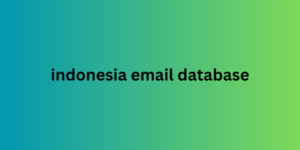For example, if a company took out a loan of 2 million rubles for a year at 10% per annum, it can base the profitability on additional investments at 10%. Thus, at the end of the year it is necessary to return 2.2 million rubles. Let's say that the plan for the year is to produce 100 thousand units of products, the cost of each of which is 100 rubles.
The amount required to cover the loan is added to the cost price: = 2,200,000 / 100,000 = 22 rubles. And with a 25% markup, the cost becomes: (100 + 22) * 1.25 = 152.5 rubles. You can not include the additional 10% for the loan in the calculations, but simply attribute it to expenses. In this case, the price is formed using the full cost method.
Weighted Profit Method
The practice of using the high-cost pricing method is indonesia email database limited to individual goods, but it is periodically used.
Suppose a company has determined that the potential market capacity for product X is 50,000 units per year. In this case, it is necessary to determine the minimum price to cover costs and crowd out competitors, or the point of balanced profit.
Weighted Profit Method
Source: shutterstock.com
Let's say fixed costs are 1 million rubles per year, and variable costs are 20 rubles per unit. Then:

FC = Fixed Costs / Quantity + Variable Costs.
There is a question: what is the difference between TB and cost price? In fact, there is none. It is just that when the cost price is considered, it is cost price, and if it is necessary to determine the quantity of products required to cover costs, it will be the break-even point. In the given example:
TB = 1,000,000 / 50,000 + 20 = 40 rubles.
Case: VT-metall
Find out how we reduced the cost of attracting an application by 13 times for a metalworking company in Moscow
Find out how
Active and passive pricing within the cost method
There are two types of pricing when it comes to applying the cost method: active and passive. The latter is based on taking into account the costs of the organization and its competitors, without striving to maximize profits, but only to recoup costs.
Active pricing within the framework of this method means the use of various strategies for managing prices, sales volume, marginal income and turnover based on the analysis of the company's fixed and variable costs.
Before deciding on the formation of a pricing policy, it is necessary to analyze the current situation on the market where the product is presented. In the case of unfavorable conditions and declining demand, organizations prefer to use passive pricing methods.
In this situation, active cost management does not bring tangible results, since the reaction of buyers remains weak. But if the market is in the growth stage, a passive approach to pricing may not be the most effective.
Active and passive pricing within the cost method
Source: shutterstock.com
When using the cost method, it is important to consider the classification of the organization's expenses, which plays an important role in management accounting. In practice, the division of costs into fixed (constant) and variable is often used. This allows us to identify how various economic indicators react to changes in this ratio.
The cost-based pricing method serves as the basis for analyzing the relationship between cost, profit, and expenses of an organization. Using cost-based pricing methods, it is possible to calculate the costs of producing goods and their relationship with possible profits at different production volumes, sales levels, and market prices.
Recommended articles on this topic:
B2B Marketing: Key Features, Promotion Channels
Marketer's KPI - Key Indicators and Accurate Calculation
Example of a cooperation proposal: just follow the instructions
Cost-based pricing method in public procurement
One of the pricing methods under Federal Law No. 44 is a detailed study, in which the cost is determined as the sum of expenses and the standard profit adopted for a given industry.
In this case, all typical direct and indirect costs of production, acquisition and sale of goods, as well as their delivery, storage, insurance and other expenses are taken into account. The customer can obtain information on the average profit for a specific area by studying contracts covered in the Unified Information System or other sources.
For special cases where the customer has requested something unique and has not received any responses to RFQs, a special method is used. The information needed to fulfill the order is not found in publicly available sources.
This situation is typical, for example, when manufacturing custom equipment or providing services on a special request for a specific customer.
Efficient approach methods can also be applied if there is a recommended price calculation methodology that takes into account direct and indirect costs, as well as profit margins.
For example, if it is necessary to remove solid waste or determine the cost of design services, the customer can use the NMCK method in the absence of market information on the cost.
The cost-based pricing method includes:
accounting of profits and labor costs;
purchase of materials and components;
overheads.
When using this method, it is important that the customer conducts a market analysis and only then applies the cost method of calculating the initial maximum contract price if the study does not allow determining the cost.
Let's look at a contract for scientific research on the topic: "How to improve the efficiency of public procurement."